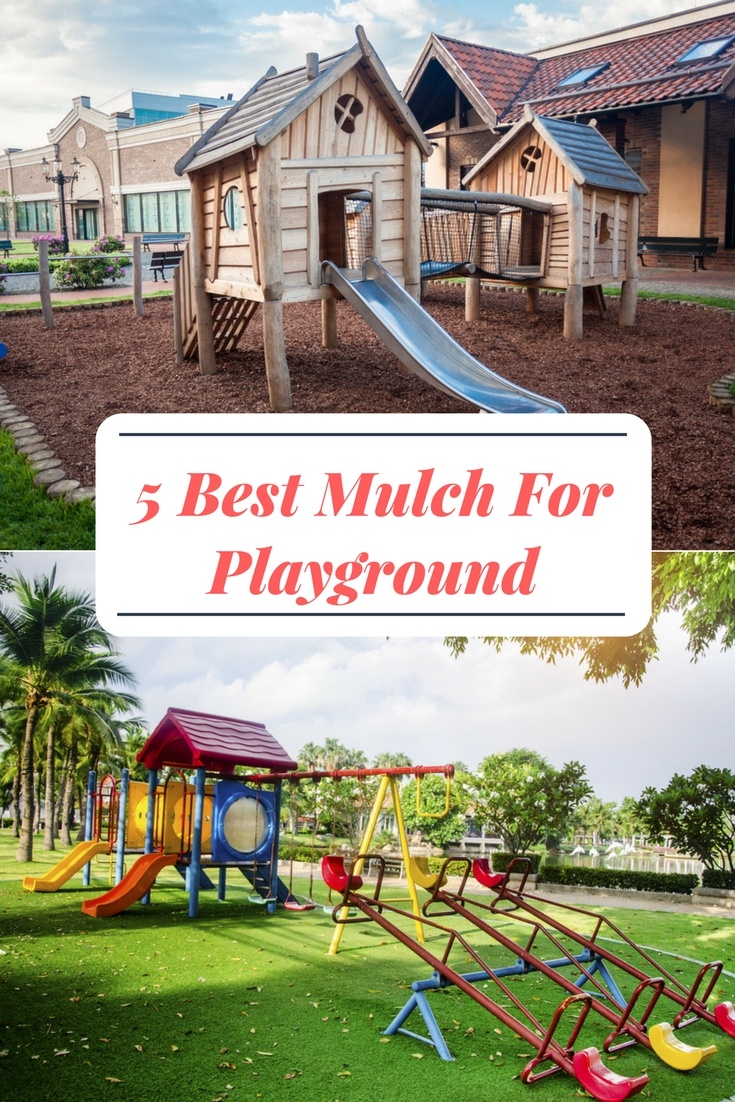If you are planning to have a playground, you need to have the ideal groundcover. By this, the groundcover should visually complement the recreational equipment intended for children to play with. In addition, it should be relatively affordable and is not hard to maintain in the long run. Last but definitely not least, the groundcover for the playground should be safe for children and adults alike.
With so many choices available, which one is the best mulch for your playground? Well, we narrowed the list down to five options to help you decide.
1. Rubber Mulch
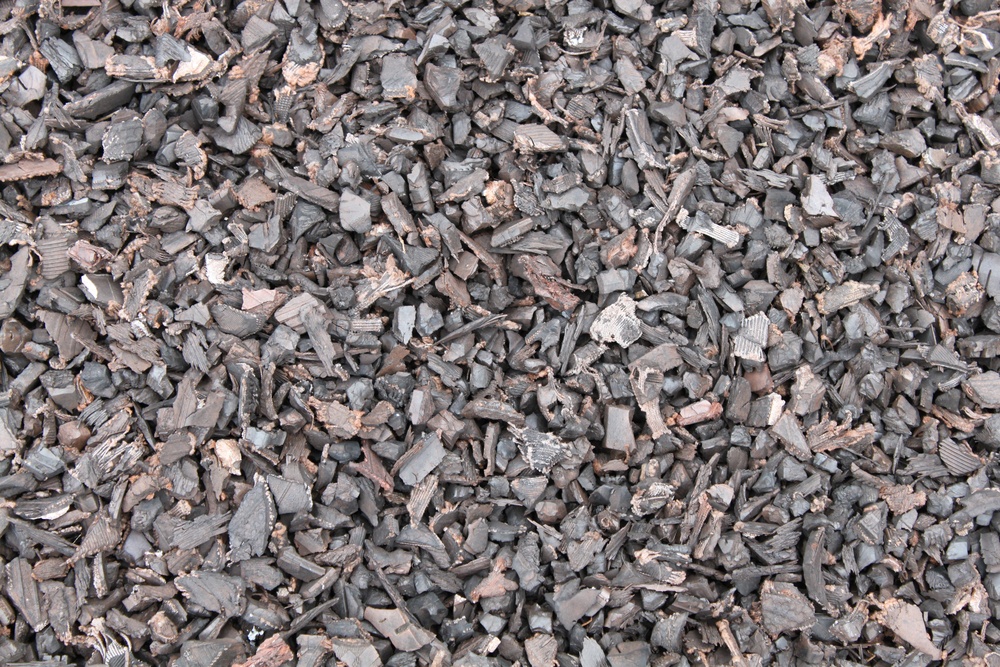
The first option you have is to use rubber mulch, which is also referred to as tire crumb. This type of mulch is favored by many people due to its reliability and its many color options. Rubber mulch is incredibly durable and effectively protects the soil.
In terms of children’s safety, this mulch immediately drains water instead of letting slippery puddles appear. Likewise, rubber has adequate impact absorption to lessen the chances of children getting injuries when falling. With these benefits, it is no wonder that rubber mulch is a favorite material in places such as golf courses, playgrounds, and running tracks.
You can choose between two forms of rubber for your playground: rubber mulch and bonded rubber. The biggest difference is that bonded rubber has a solid surface, which needn’t be replaced as frequently as rubber mulch. Then again, bonded rubber is a bit more expensive than rubber mulch.
Regardless of which type you pick, you can be assured that the mulch will be durable, non-porous, impact-absorbing, and won’t be blown away due to the wind.

Via https://www.amazon.com/
2. Engineered Wood Chips
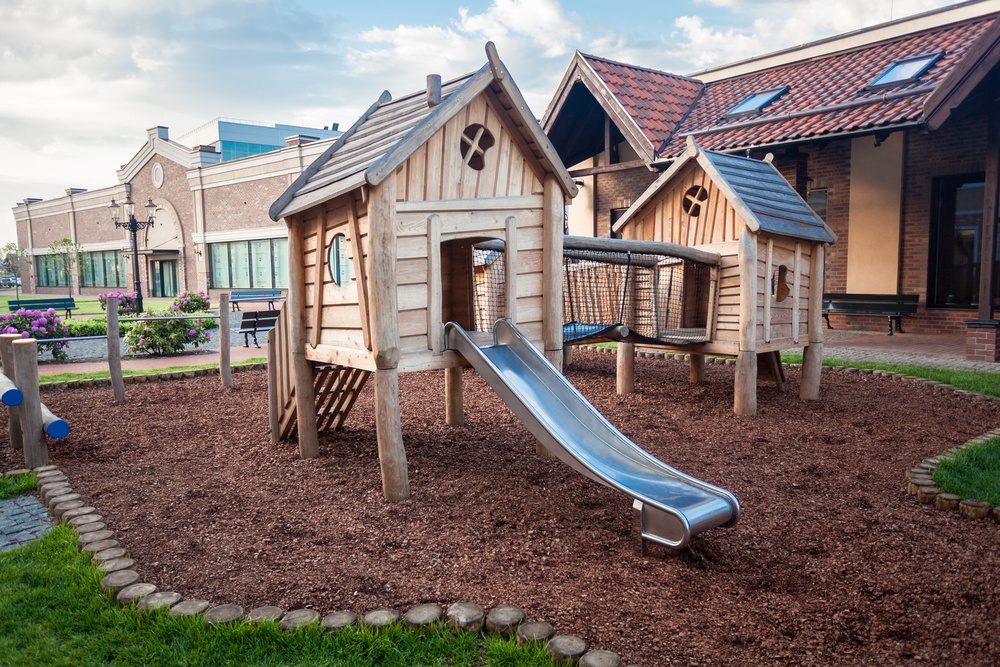
The next choice for your playground is to install engineered wood chips. What makes these wood chips different from the normal variants is that they have been precisely chosen according to the wood type and size. The chips made of virgin wood fiber are not mixed with any twigs or other unintended debris that would ruin the playground surface.
With their affordable price at just two dollars for every square foot and durability, engineered wood chips are favourable for some playground owners. It also helps that people in wheelchairs can safely move on them even if the chips are not bonded.
3. Pine Bark
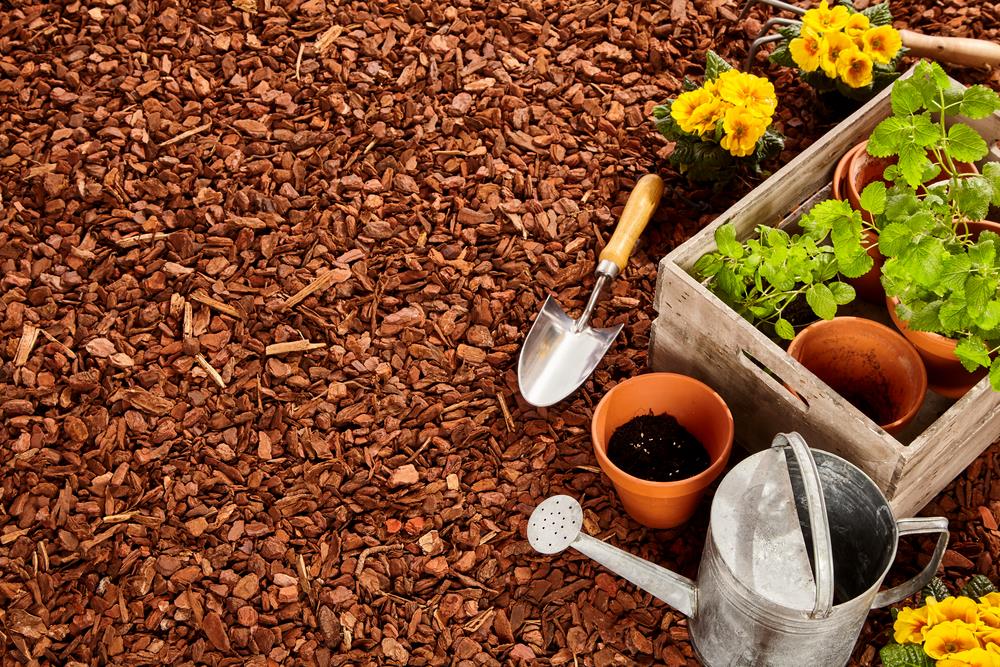
This material is made up of the shredded pieces of pine tree bark. While there are mulches wholly formed by pine bark, some variants can include bark from tall firs and spruces.
Pine bark mulch also varies by form and texture since you have the option to have small, finely shredded pieces of bark or relatively huge pieces - which are commonly known as pine nuggets. While it is all your choice, we do recommend the pine nuggets since they do not decompose as quickly as the double-processed type.
Even if you do pick the finely shredded bark mulch, you won’t have to replace them soon since bark mulch, along with its reddish color, lasts longer than nearly all other organic forms of mulch. Furthermore, pine bark stops soil borne diseases from spreading around nearby plants.
One disadvantage of using pine bark is that it is lightweight. If it is too windy or if there is a heavy downpour, the materials could easily get moved around.

Via amazon.com
4. Synthetic Turf

Another popular groundcover for playgrounds is synthetic turf. Referred as artificial grass, this material mimics the appearance of natural grass while eliminates the need for watering, mowing, and weed application.
It is more expensive to install than natural grass, but it will save you money due to it being a low-maintenance groundcover. To keep the artificial grass looking as good as new, you simply have to occasionally rinse it to remove debris.
Synthetic turf is safe for children since it has a soft cushion for impact absorption. Parents also do not have to worry about children carrying grass and dirt with their shoes and leaving them inside the house. Consequently, artificial grass is non-slippery and can be safely accessed people in wheelchairs and babies in strollers.
The only minus is its tendency to easily become hotter than natural grass during sunny days. Other than this, synthetic turf is a decent playground surface.

Via amazon.com
5. Natural Grass
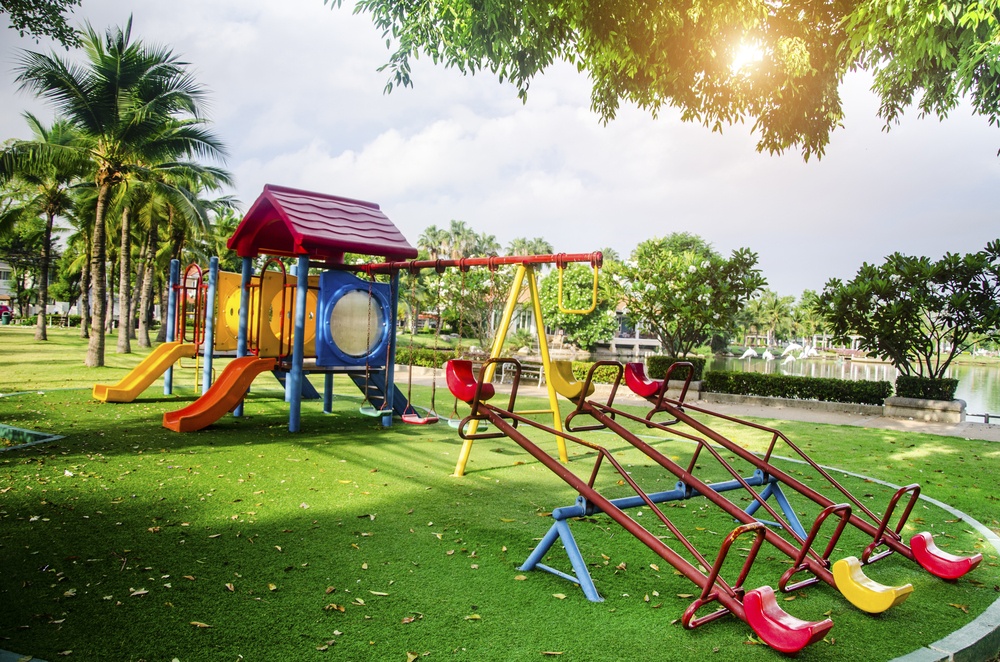
Lastly, you can also opt to have natural grass as your playground surface. Natural grass has various benefits not only for children but also for families in general.
For one, grass naturally absorbs carbon dioxide while letting out oxygen to provide fresh air for everyone. Secondly, organisms, which effectively handle organic and inorganic substances, thrive in the topsoil and in natural grass.
If it rains, the grass will filter the incoming rainwater. Moreover, having natural grass in your playground will significantly lessen the soil erosion. This type of mulch also provides better cooling than cement and synthetic or artificial grass. In addition, it cannot be denied that people like the relaxing appearance and the clean scent of natural grass.
Finally, natural grass is a cost-effective choice since this type of playground surface simply regenerates throughout the year. It only really requires some watering if there isn’t sufficient rainfall. There is no need to pay any contractor for maintenance. Even if you want to remove the natural grass from the playground, it shouldn’t cost as much as hiring someone to remove artificial material.
Overall, choosing mulch for your playground can take a considerable amount of time and money. Still, it’s always worth remembering that there is nothing more important than the comfort and safety of children.
Read more: 5 Alternatives To Mulch In Flower Beds
If you have any queries, send us a comment.

